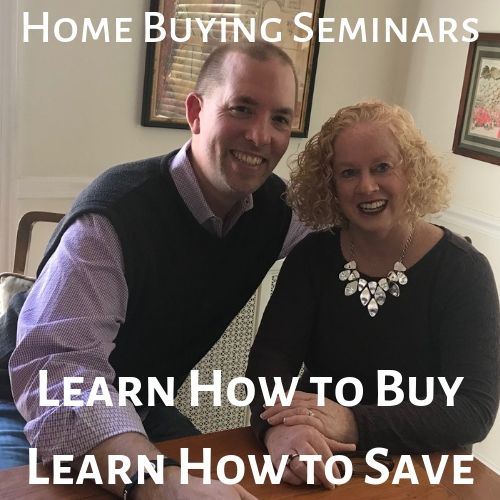In The Press
The Washington Post, February 09, 2014
The Time of your Love Life by Beth Marlowe
Lisa Klein has dated younger men. And she’s over it.
“I own a business. I own property. I’m established,” says Klein, 46, a physical therapist who lives in D.C. “I want someone on my same level.”
When it comes to dating, where you look determines whom you’ll find. So for those like Klein, who want to date in a specific age range, the key is looking in places where people of the same age are likely to gather.
“I think it’s tough,” she says. “You have to go to the bar where people around your same age would be.”
Not everyone cares. “People my age are on Tinder and OkCupid,” Klein says. “They’re hooking up with 20-year-olds, but whatever you need.”
One wonders how those May-September romances will fare in an age when “dating” means different things to different age groups. Smartphones and social mores have led to a culture in which the way you begin a relationship depends a lot on how old you are.
Steve Miller, 30, got his first smartphone in college. That seems like a small thing, but it’s a big deal for his romantic life.
Because he didn’t start texting until his 20s, when he gets a woman’s number at a bar, his preference would be to get in touch later with a phone call. But among women who are even slightly younger than him, he says, that’s “considered way too bold.”
So Miller, who works in banking and lives in Arlington, has a strategy. Between getting someone’s number and asking them out, there needs to be a week or more of increasingly flirty text messages, complete with nonintrusive questions and witty repartee, all — hopefully — leading to a date.
“This is the part that’s become more and more frustrating over the last 10 years,” Miller says. “You have to play this little, tiny back and forth.”
If love is a battlefield, dating in your 20s is a war of attrition.
For millennials, Miller’s strategy probably sounds familiar. But if you’re any older, all that texting may seem daunting, frustrating and carpal tunnel-inducing.
That’s normal: Not every age group dates the same way. Use our chart to break down where to find potential dates of any age, and pick up some tips on how to woo them.
Up To Date?
Here’s the breakdown of how and where to look for mates at any age.
Online Dating
Online dating can be a great way to meet people you wouldn’t otherwise. The primary perk is that you know everyone else on the site is looking for a relationship — you don’t get that in a bar. We asked Erika Ettin, the online dating expert behind the company A Little Nudge, for tips.
20s
Young daters are the most likely to embrace technology. “If you’re in your 20s, you’re doing the free apps,” Ettin says. Smartphone-loving millennials flock to Hinge, which lets you flick through single friends of your Facebook friends, and Tinder, which finds singles who are geographically nearby. You’ll also find 20-somethings on free dating websites like OkCupid.
30s
“If you’re looking for something more serious, it’s worth it to pay for a site,” Ettin says. “It shows that you’re at least somewhat invested.” She urges daters in their 30s and older to put skin in the game by joining a site like match.com or eharmony.com. And “the niche sites are really good,” she says. So if you want to meet someone of the same religion, try jdate.com, naseeb.com, christianmingle.com or catholicmatch.com.
40s
Since many 40-something daters have children, online is often the way to go. Lisa Klein, a 46-year-old physical therapist who is one of Ettin’s clients, finds that many people in her age group have kids that keep them home in the evenings. “They just don’t have the time to be out in bars meeting people,” she says.
50s & older
Ettin says this age group faces a dilemma: “Most men think they want someone much younger.” To avoid wasting time on a similarly aged person who’s just not that into you, get yourself on ourtime.com, a website specifically for daters older than 50.
Speed Dating
Going on a series of four- to eight-minute dates is an efficient way to decide who you’re interested in. Another advantage: Events are often divided into age or interest groups. If you’re interested in an age-defined event, know that organizers don’t ask for ID. “Everything always skews older,” says Michael Karlan, the founder of D.C.-based speed dating company Professionals in the City (prosinthecity.com). “Maybe 90 percent of people feel they’re young for their age.”
20s
If you’re in the market for single 20-something men, it turns out you can find quite a few at speed dating. “You tend to get more men than women [at the events for 20-somethings] just because of demographic demands,” Karlan says. At events for heterosexual daters, his company may cut off sales early to one gender to keep the numbers even.
30s
Speed dating gets a little more serious in your 30s, Karlan says. And the demographics begin to flip: “There are more women than men [at the events], especially as you get older, and men tend to date younger women as well,” he says, so 30-year-old men may choose to attend events aimed at 20-year-olds. At events for 30-somethings, many daters have serious relationships on their minds. “The 30-somethings put more pressure on themselves,” Karlan says.
40s
Forty-something speed daters are likely to be a little more relaxed than their younger counterparts, Karlan says. Many have been married before or have kids, so they may feel less pressure to find their soul mate than the 30-somethings do. One tip for this age: If you’re one of the only single people in your friend group, use speed dating events to not only meet potential partners, but also to meet single friends to go to other singles events with.
50s & older
Speed dating events for those in their 50s and older are often more formal affairs. “Fifty-somethings take it a lot more seriously,” Karlan says. They dress up more than the other age groups, he says. “They’re like, ‘Yeah, I’m here to meet somebody.’”
Karlan says in the slightly older group — around age 60 and up — most people have been married before, and they often have kids. “People are looking more for companionship,” he says.
‘Organic Dating’
Ah, the old-fashioned way. You meet at a bar, you think the other person is cute, you chat and plan to hang out again. If only it were so easy. For those brave enough to wade into the D.C.-area singles scene, the key is going where you can meet like-minded mates, whether that’s a bar, a hiking club or a karaoke league.
20s
The bar scene for 20-somethings and those who want to date them thrives both in the District and close-in suburbs like Arlington, Alexandria and Silver Spring. The younger 20-somethings may have luck at clubs (“After about age 25 or so people start to burn out on the nightclubs,” Karlan says) and at bars near colleges, where upperclassmen and grad students hang out.
30s
Good news: As you become more stable in your career, the bars get better. “You’re not gonna go to the bars with the Jell-O shots and the $2 happy hour,” Ettin says. Still, as their friends start to settle down, 30-something daters can feel torn between the bar-and-hookup culture of the 20-somethings and the cocktails-and-dates of the older set. The positive side of going to all those weddings? This is a good age to ask your newly coupled up friends to set you up.
40s
Though many 40-somethings live in the suburbs, the place to meet single ones is the city. “I actually moved into the city from my house in Del Ray because there are more single people,” Klein says. “You’re out and about more often. When you’re in the suburbs you tend to be in your home.” Klein likes going to the trendy bars along 14th Street NW and restaurant-bars like Cashion’s Eat Place in Adams Morgan.
50s & older
Ettin recommends group activities for her older clients. Hiking and sailing groups are popular, and “some of my older male clients really enjoy going to yoga,” she says. Just make sure you choose an activity you’d enjoy doing anyway: You’ll meet people who share your interests, and you’ll have a good time no matter what. “Don’t force yourself to go because maybe you’ll meet someone,” Ettin says. “Then you’re setting yourself up for disappointment.”




 Menu
Menu





